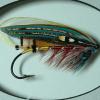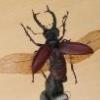-
Content Count
483 -
Joined
-
Last visited
Community Reputation
0 NeutralAbout salmobytes
-
Rank
Advanced Member
- Birthday September 1
Previous Fields
-
Favorite Species
sculpin
-
Security
2009
Contact Methods
-
Website URL
http://montana-riverboats.com
-
ICQ
0
Profile Information
-
Location
at my keyboard
-
#18 Daiichi 1130
-
Focus Stacking multiple images I have one of these: https://cognisys-inc.com/focus-stacking/stackshot-pkgs/stackshot-macro-rail-package.html?gclid=CjwKCAjwkeqkBhAnEiwA5U-uM18ceXBD_RrBoEo6PJVtCppYCzsgEkDeAVDOIASPNQhtM8AWV2mROhoCqh4QAvD_BwE Learning how to use it, and all the peripheral software that goes with super-macro focus stacking is a big lift. But it's also a fun hobby. Any tripod and dslr with macro lens, light tent and umbrella strobes (like Alien Bees) Cognisys -- computer controlled focusing rail, with it's own software Entangle -- tethering software ZereneStacker -- focus stacking software -- this is the only software I use that is not free. It is very good. Darktable or Ansel for editing raw images, and for conversion from raw to tiff Gimp, for final touch-up and conversion from tiff to jpeg A Cognisys rail is expensive. You can buy manual thumb-screw rails for less. You cannot do it all without the camera on a tripod. You can make focus stacks without any focusing rail at all, by manually, carefully, twisting the focus ring on the lens. You cannot do focus stacking at all without focus stacking software of some kind.
-
:=))
-
The Salmobytes wigglers? They are a not fragile. Tying them does take some learning. They are powerful. Fish respond to diving wigglers in ways that make your eyebrows move higher. :=)) They are in fact, major big fish mojo. Dave Whitlock once referred to home made diving wigglers as "impossibly difficult to tune" (in Trout Magazine)--which among other things suggests he at least tried. But they are not so hard to tune, once you figure it out.. A little buoyancy at the top rear end opposing a little weight (below the bill) at the lower front end keeps them from spinning in a circle. So they wobble back and forth while diving. Phew. The are absolutely deadly on Spring Creeks, at dawn and at dusk.
-
Parachute winds below the body instead of on top https://montana-riverboats.com/Uploads/up-ztk_2023-05-29-01.25.41_PMax_Ducktail-pmd.jpg
-
A few more fly pics, all done with stacking https://montana-riverboats.com/?robopage=Flies/Sandy-Pittendrigh
-
My home-rolled light tent. You can buy them or $100 bucks or so. Or cobble one together with scraps.
-
.....from the light tent, with maybe 30 exposures, white PlexyGlass background with blue acetate taped to the back of the plastic, with slave flash behind the light tent, shining on the background. Slave flash from below too. Two AlienBees strobes shining on the light tent.
-
Somehow I missed this thread, even though it's a favorite subject. You might lose some fine detail at F32 but for a single exposure that provides the (single shot) greatest depth of field. F22 might be a better compromise. Both would require lots of light. Another take is focus stacking. If you use a tripod you can carefully sightly twist the focus ring between multiple exposures, and then use software (like ZereneStacker) that sorts through each exposure and chooses the sharpest pixel at each location. Or you can use software and a usb cable to electronically twist the focus ring (Entangle on Linux....Helicon Focus on Mac/Windowze) Or you can buy a stepper motor camera base that sits on top of a tripod, that moves a fixed-focus camera forward many times, taking a new exposure at each step..................................and then use ZereneStacker to transform 10, 50 or 100 exposures into one image. Can get cheap but good strobes at Alien Bees. Can make a light tent with a curtain and clear vinyl tuibing (for a frame) White-balanced "tensor study" iights inside the light tent provide some counter-balancing directional light) 1/8" white plexy glass can be bent to an L-shaped frame, so slave flashes can be popped from below and behind (to make a bright background) Blue plastic sheeting can be taped onto the back side of the plexy glass to make a sky blue background. PlexyGlass makes shney reflections that ruin the background as is. But you can gently rub the plexyglass with polishing compound and a rag to make a non-reflective, not-shiny surface. Black fabric can be used to make a jet black background No matter what you do you'll want to work on post processing skills--expensive from Adobe, free from Gimp , Darktable and Ansel. Entangle. ImageMagic etc. Many tell you to use the lowest possible ISO (hence lots of artificial light) but I often use 800 or more. F8 makes a sharper macro image than F32 phnotomacography is a great online resource. Good people. Good information. https://www.photomacrography.net/forum/
-
Vaguely related--a Bunyan Bugger Can be seen as a BunyanBug2.0 updated for contemporary materials?
-
1/8" or 3/16 tungsten bead up front makes them a bit heavy, but still easy enough to cast, perhaps with an 8wt rod and a 2x tippet. I fish them across and down wading, or troll them downstream from a moving driftboat.
-
Ducktail PMD on a #18 Tiemco 2587





